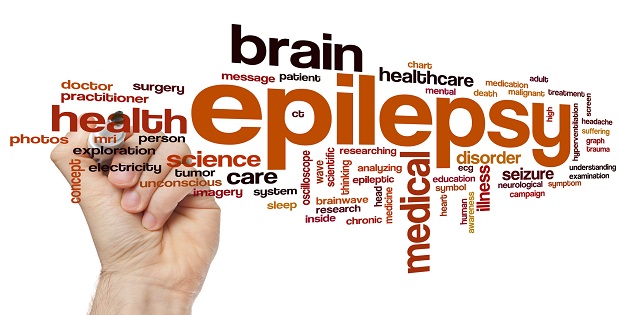11 Key Epilepsy Facts that Everyone Should Know

Basic Epilepsy Facts
Epilepsy, sometimes referred to as seizure disorder, is a general term that refers to a tendency to have recurrent seizures. There are many kinds of seizures, but all involve abnormal electrical activity in the brain that causes an involuntary change in body movement of function, sensation, awareness, or behavior.
Symptoms can vary from a momentary disruption of the senses, to short periods of unconsciousness or staring spells, to convulsions.
Epilepsy can be caused by many different conditions that affect a person’s brain. Often no definite cause can be found. Seizures cannot be transmitted from person to person. From www.cdc.gov/epilepsy/basics/faqs.htm
Epilepsy Facts related to being Diagnosed
According to Epilepsy.com, “a person is diagnosed with epilepsy if they have one or more seizures that were not caused by some known and reversible medical condition like alcohol withdrawal or extremely low blood sugar. The seizures in epilepsy may be related to a brain injury or a family tendency, but often the cause is completely unknown. The word “epilepsy” does not indicate anything about the cause of the person’s seizures or their severity.”
Quick Epilepsy Facts from Epilepsy.com
- Epilepsy means the same thing as “seizure disorders”
- Epilepsy is the fourth most common neurological disorder and affects people of all ages
- Epilepsy is characterized by unpredictable seizures and can cause other health problems
- Epilepsy is a spectrum condition with a wide range of seizure types and control varying from person-to-person
According to CDC, Quick Facts about Epilepsy in the United States
- According to the latest estimates, about 1.8% of adults aged 18 years or older have had a diagnosis of epilepsy or seizure disorder.4
- When applied to the 2013 population, this is about 4.3 million adults.2
- According to the latest estimates, about 1% of children aged 0-17 years have had a diagnosis of epilepsy or seizure disorder.6
- When counting both children and adults, about 5.1 million people in the United States have had a diagnosis of seizure disorder.1-3
- When counting both children and adults, about 2.9 million people in the United States have active a seizure disorder.1-3
- According to NINDS, while epilepsy cannot be cured, for some people the seizures can be controlled with medication, diet, devices, and/or surgery.
- According to eMedicine, approximately 50,000 people die each year in the USA from status epilepticus (prolonged seizures), SUDEP, and other seizure-related causes. SUDEP accounts for 8-17% of deaths in people with seizure.[2]
Cost of Epilepsy
The total indirect and direct cost of epilepsy in the United States is estimated to be $15.5 billion yearly. This estimate is based on a reported cost of $12.5 billion in 1995 converted to 2004 dollar value using Bureau of Labor Statistics data.4
In closing, remember to share this post on social media and read more related articles.
Sources:
Center of Disease Control: http://www.cdc.gov/epilepsy/basics/fast-facts.htm
eMedicine: eMedicine – Sudden Unexpected Death in Epilepsy : Article by Shahin Nouri
En.wikipedia.org: https://en.wikipedia.org/wiki/Sudden_unexpected_death_in_epilepsy
Epilepsy.com: http://www.epilepsy.com/learn/epilepsy-101/what-epilepsy
Institute of Medicine. Epilepsy Across the Spectrum: Promoting Health and Understanding. Washington, DC: The National Academies Press, 2012.
Kobau R, Luo Y, PhD, Zack M, Helmers S, Thurman D. Epilepsy in adults and access to care — United States, 2012. MMWR. 2012;61(45);909-913. Accessed February 2, 2016. pdf [863KB].
NINDS: http://www.ninds.nih.gov/disorders/epilepsy/epilepsy.htm
Russ SA, Larson K, Halfon N. A national profile of childhood epilepsy and seizure disorder. Pediatrics 2012;129:256–64. DOI: 10.1542/peds.2010-1371.
US Census Bureau, Population Division [database online]. Annual estimates of the resident population by sex, age, race, and Hispanic origin for the United States, States, and Counties: April 1, 2010, to July 1, 2013. Release Date: June 2014. html. Accessed February 2, 2015.










